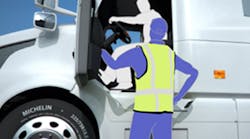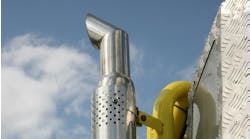You know what causes grey hairs? When you're fighting to recruit new drivers and scrapping to hold onto existing drivers, but you need to fire a driver for safety reasons. It feels like drilling a hole in your boat while you're bailing water.
Firing drivers (or "involuntary turnover") can put you in a tough spot with your operations and sales team. On the other hand, you sure don't want to increase your liability or insurance rates by holding onto a driver with dangerous driving habits.
What's the answer? Intervene with training. Don't let that driver get to the point you need to fire them. Use all the data that can feed into Idelic's Safety Suite to fix small problems before they become big problems. And, if your exec team needs a catchy slogan: "We're retaining by re-training."
Hard-braking: Coach them out of bad habits
Let's use a reasonably simple example: following distance. If you have a driver who tailgates too much, they could put the public at risk and increase your liability.
Right this very second, you likely have some data that shows they're not managing their distance. As we say around here, "Knowing isn't fixing." You need to take action before they have a rear-end collision.
But how? Hard-braking events are common events for most telematics system. Some automated camera systems automatically monitor following distance. If you've got any sort of modern technology in your truck, you're tracking hard-braking.
Action steps: Measure and train
Figure out the number of weekly/monthly/quarterly hard-braking events for the bottom 10 percent of your driver pool. Assign hard-braking avoidance training courses to that list of drivers.
Measure the results:
- How much did each person improve?
- Who improved the most?
- Who improved so much they're no longer in the bottom 10 percent?
- How much did the entire bottom 10 percent group improve?
Alternately, you can set a threshold: any driver who spends more than five minutes a day over 60 mph. Or any driver who receives more than three OOS violations in a year. Or any dispatcher who causes more than two HOS violations in a quarter.
Automated, data-driven training
Moreover, once you establish triggers and start seeing improvements, you can let the system run on its own. Training automation sets you free to focus on big problems.
If you're not sure where to start looking for data points, ATRI's Crash Prediction Model provides a sobering look at violations and convictions. Our own consulting group can help you pull together data sources. And software like Idelic's Safety Suite makes it easy to aggregate those data sources together in an actionable way.
By looking for "leading indicators" of bigger safety issues, you can use training to reduce involuntary turnover.
Part II: Voluntary driver turnover
Check out part two of this driver turnover series here.
Information provided by Instructional Technologies



